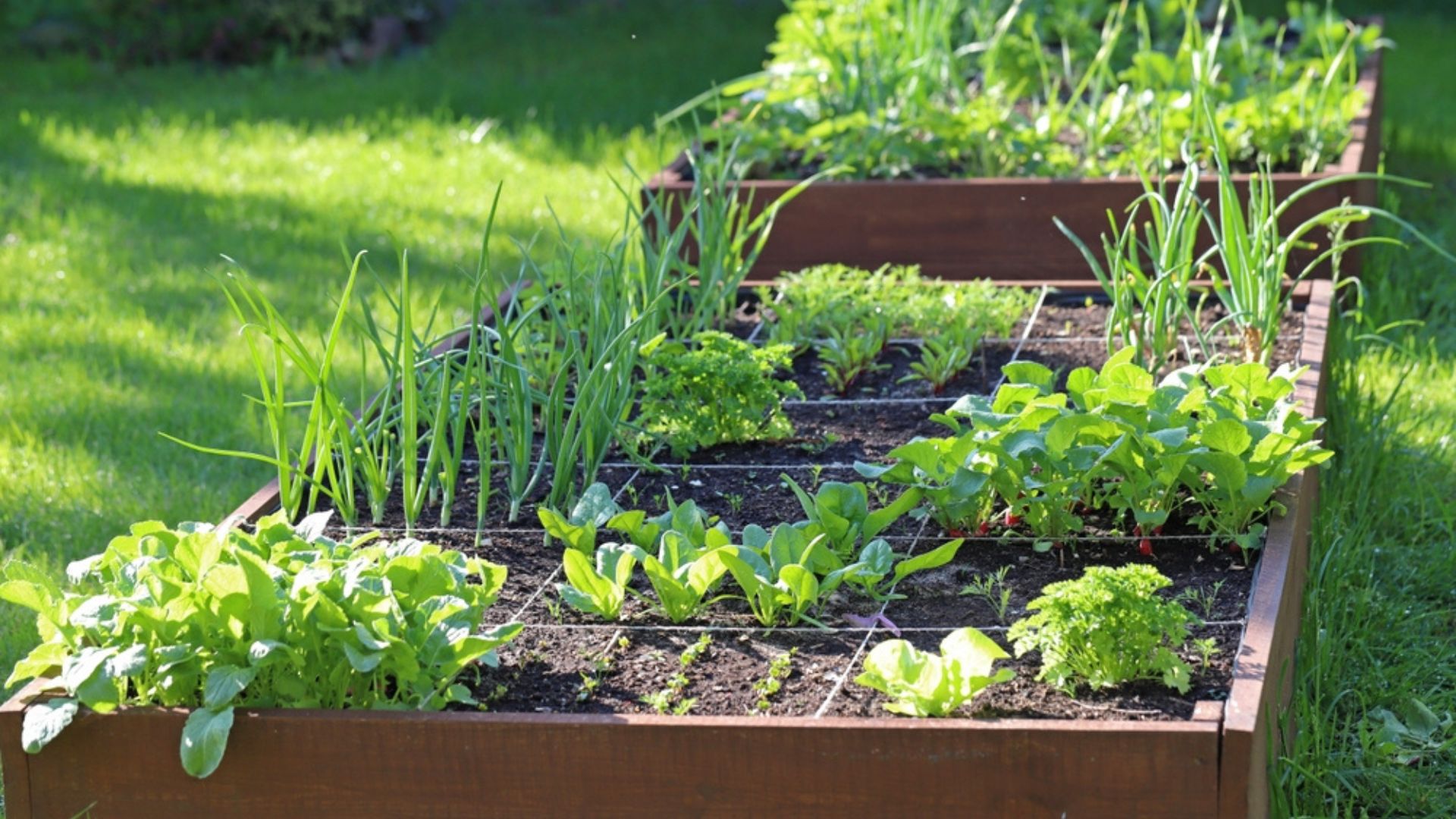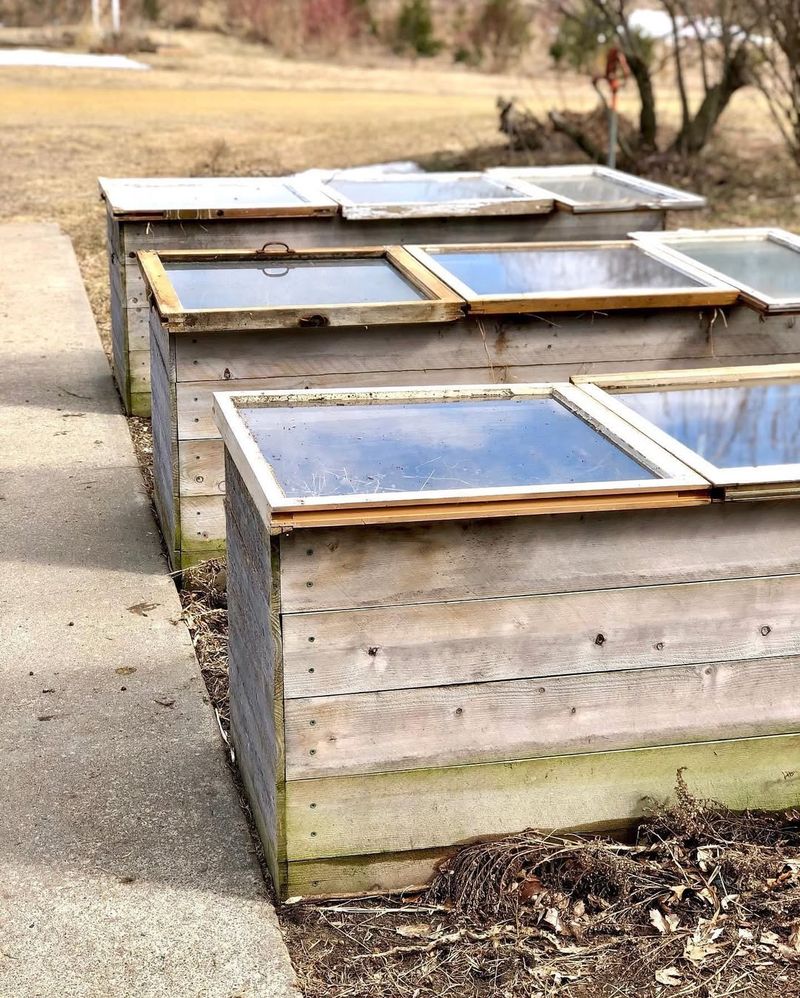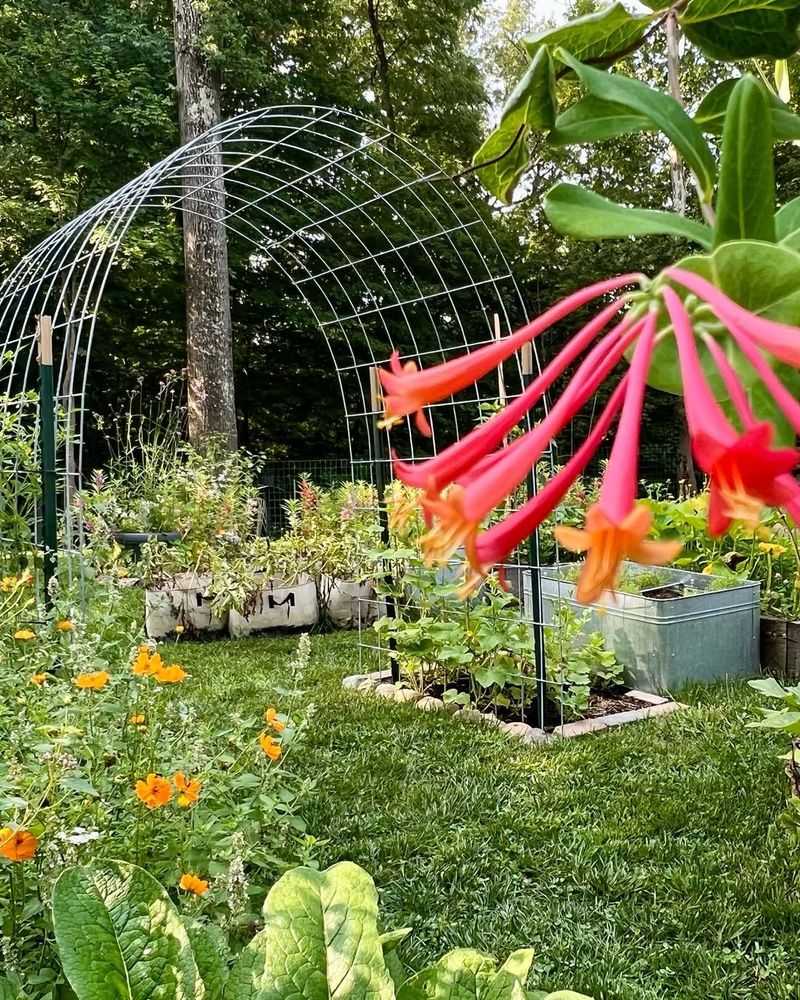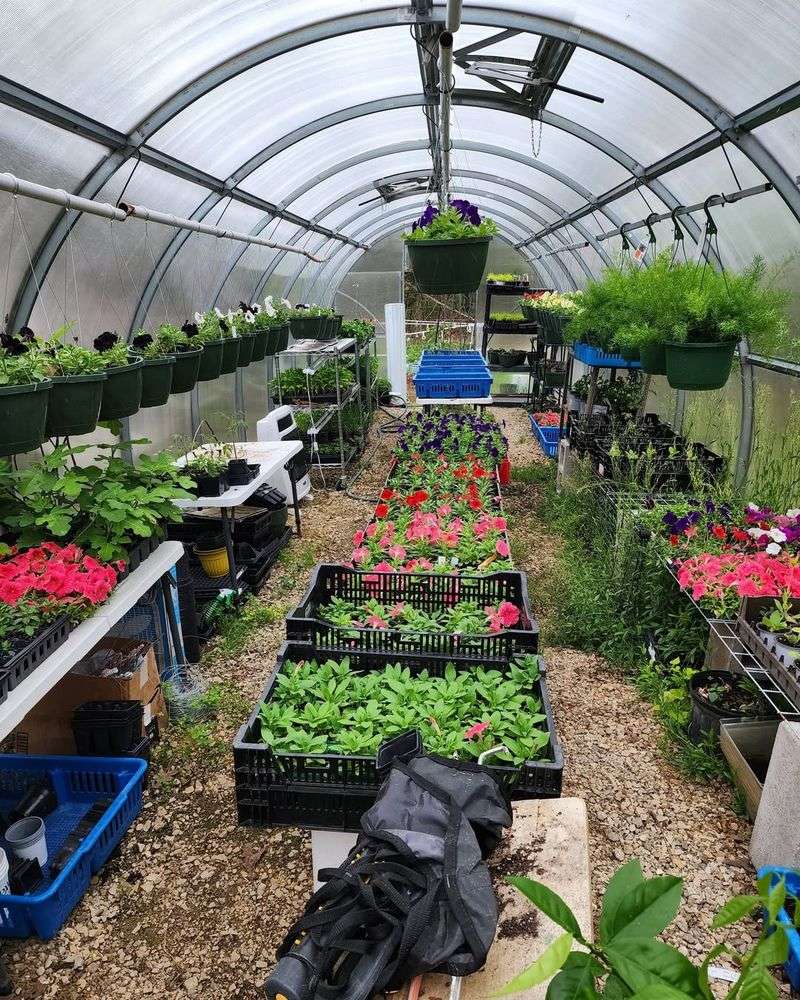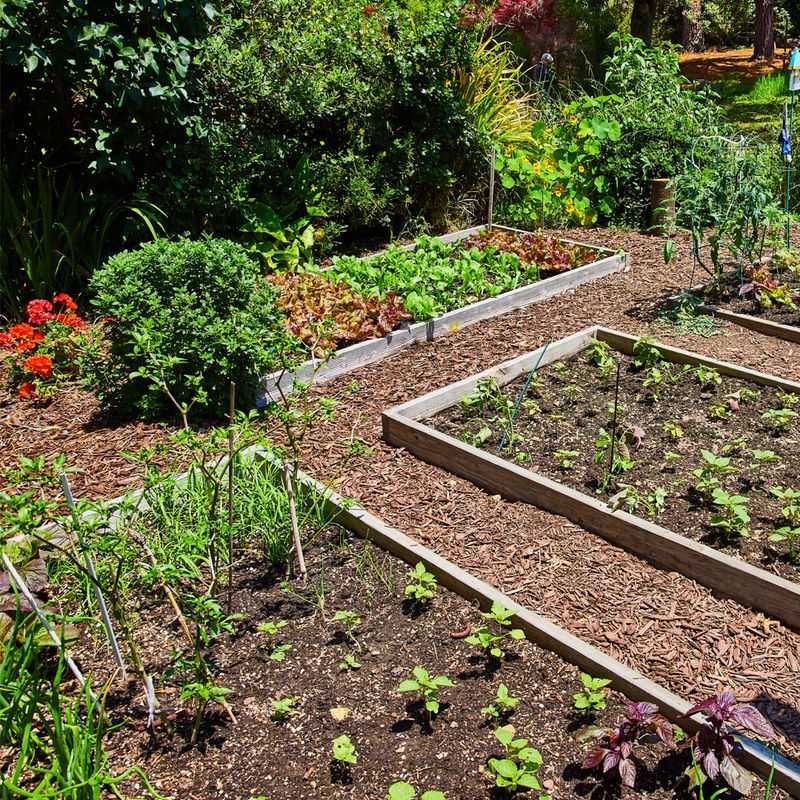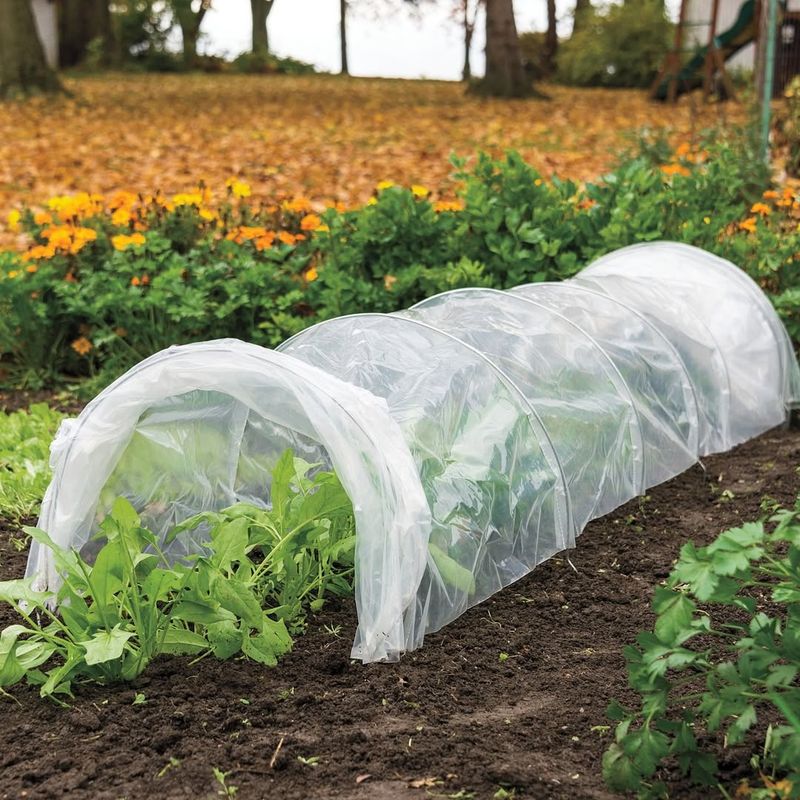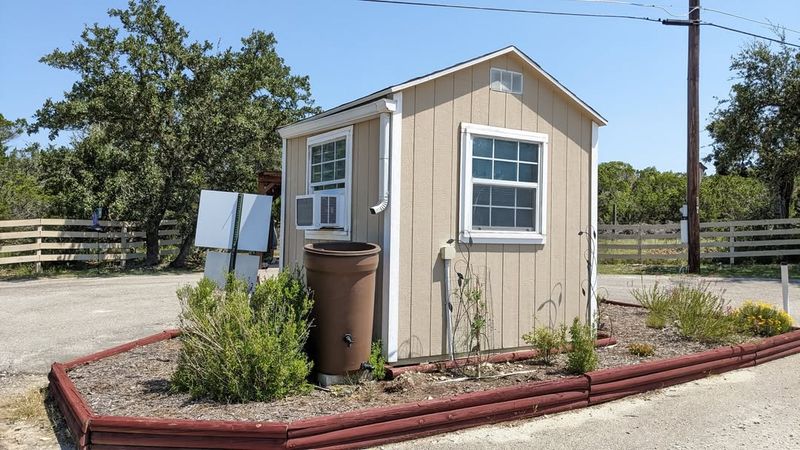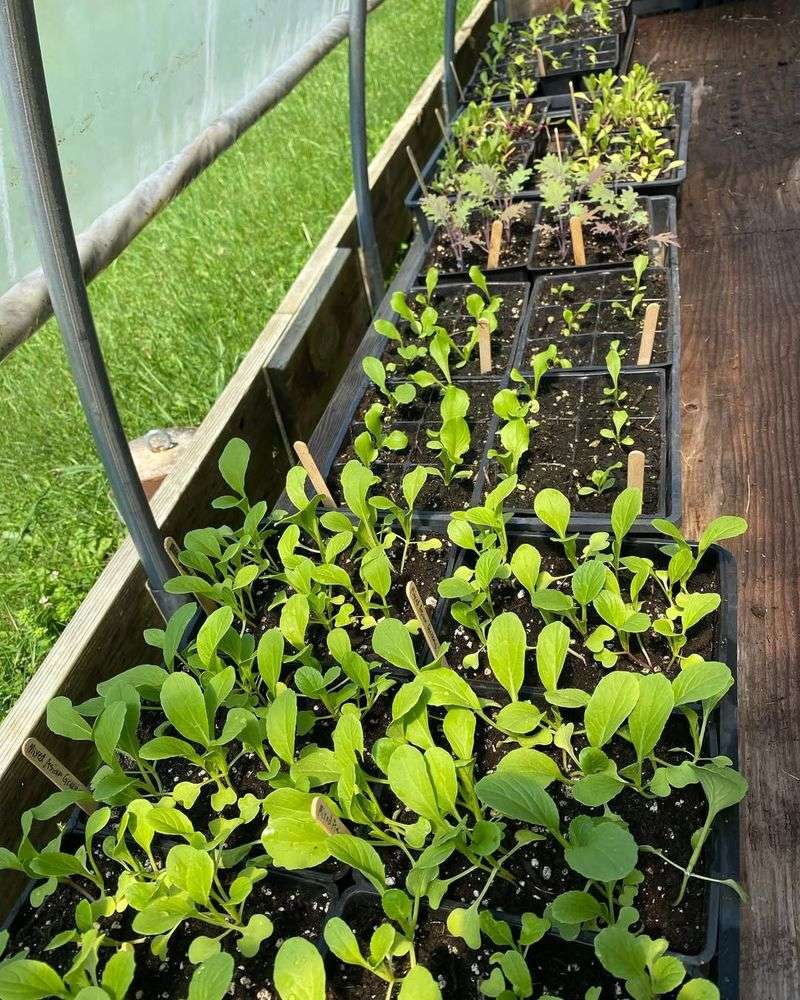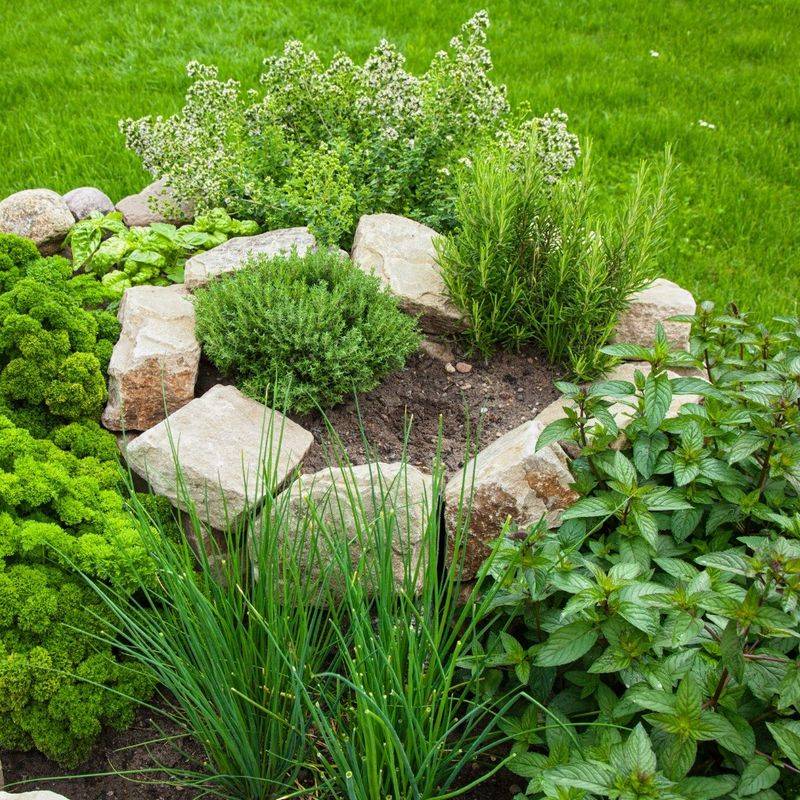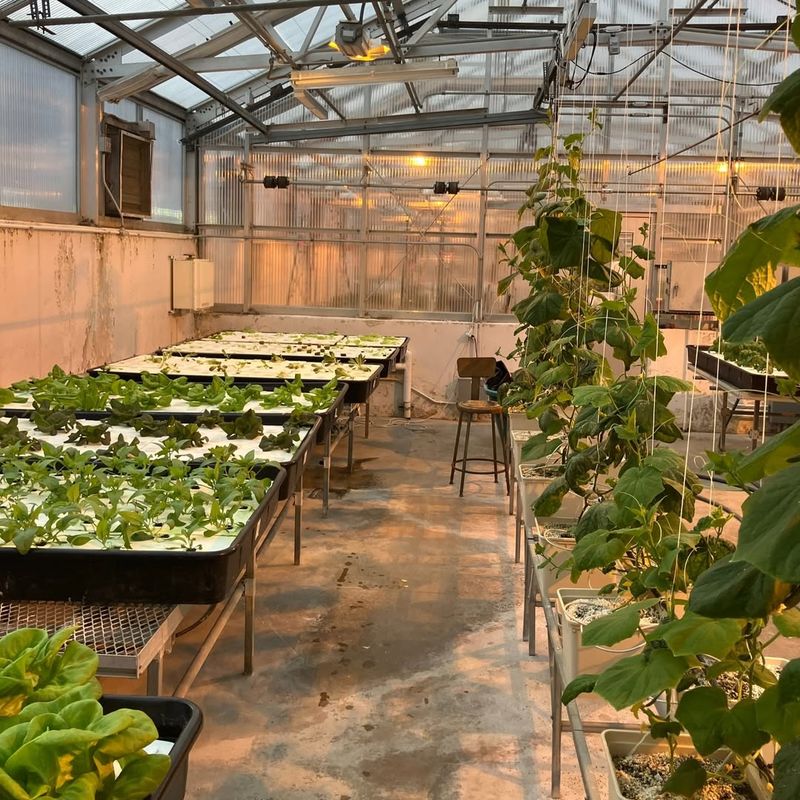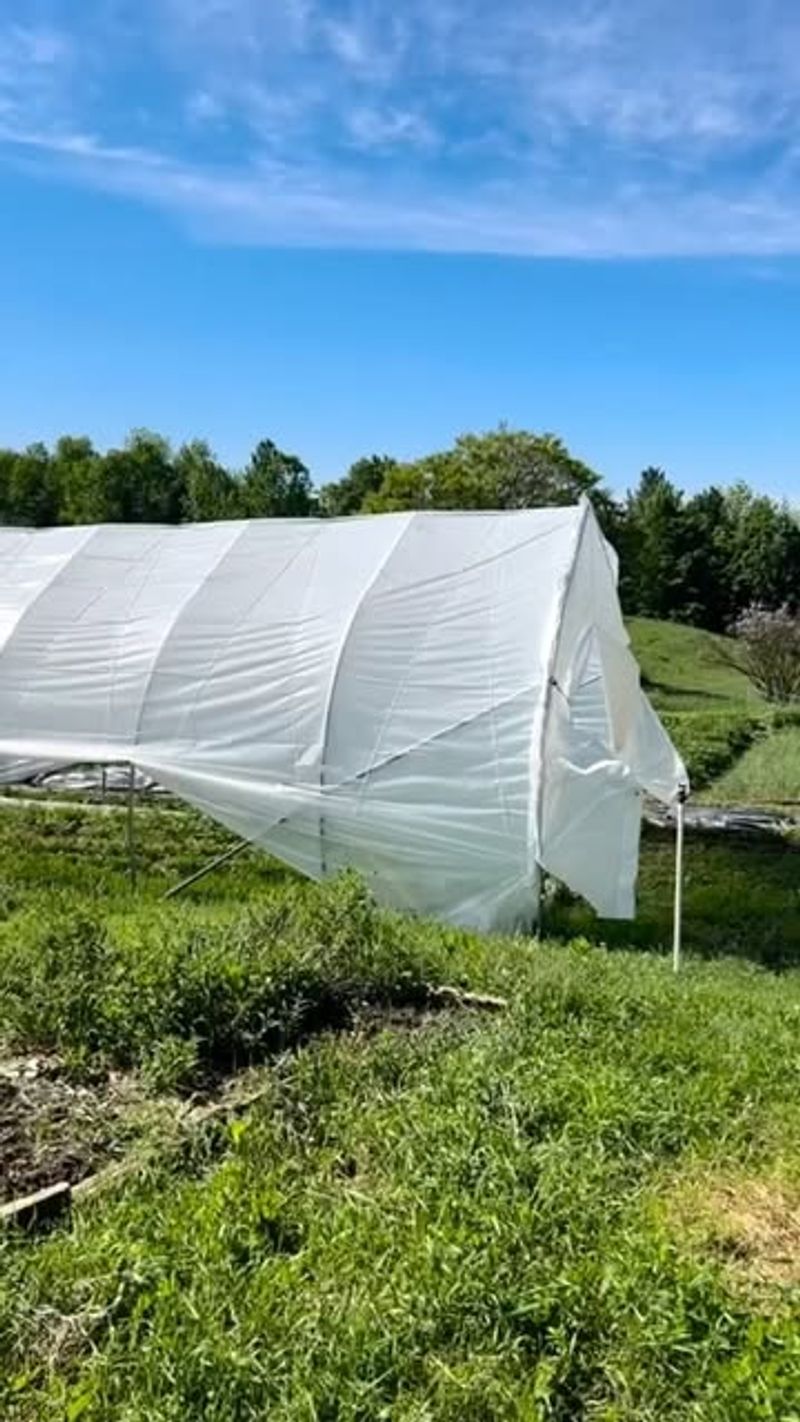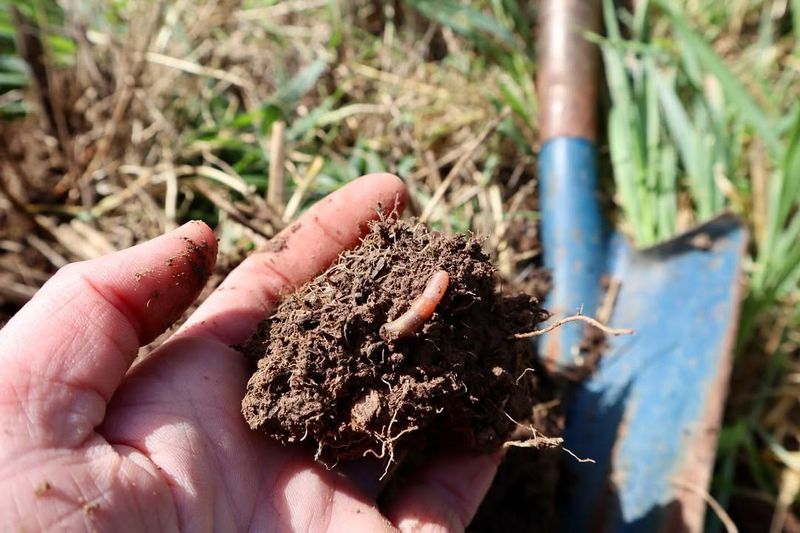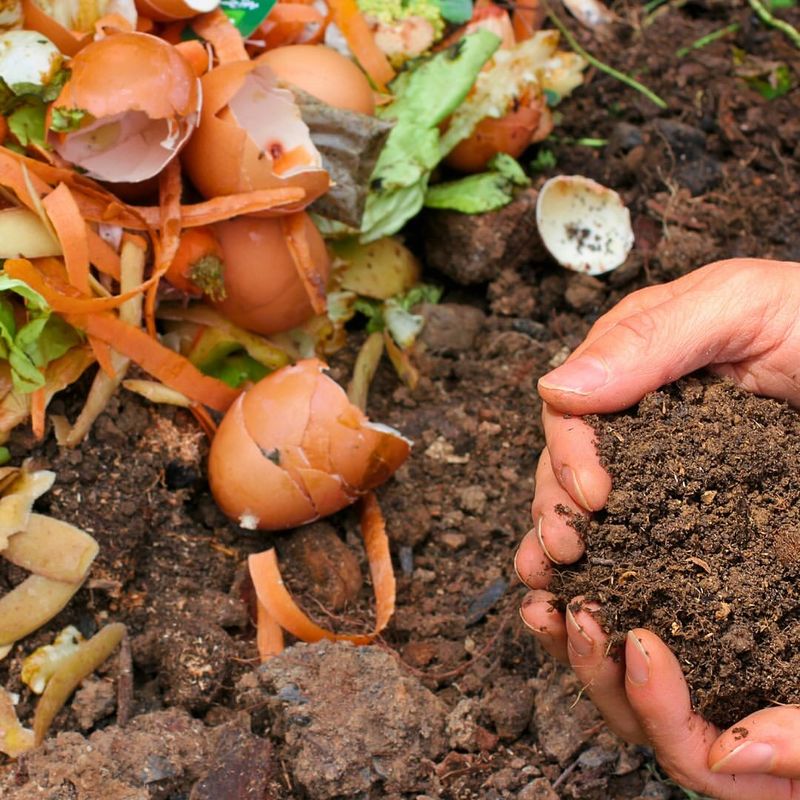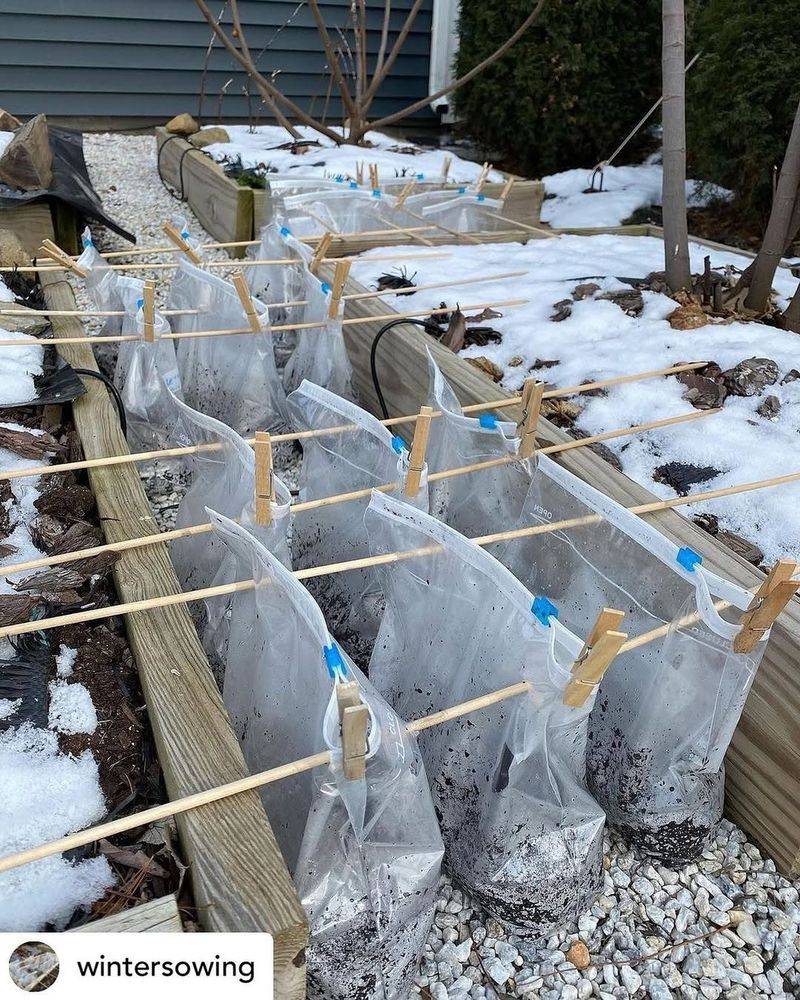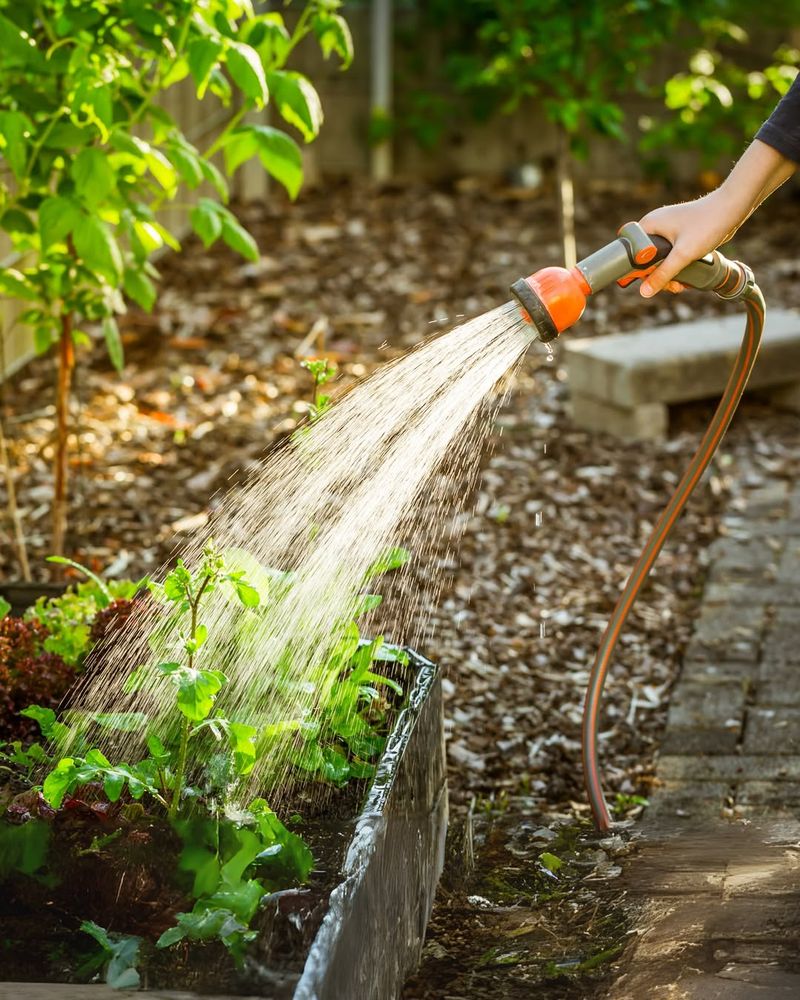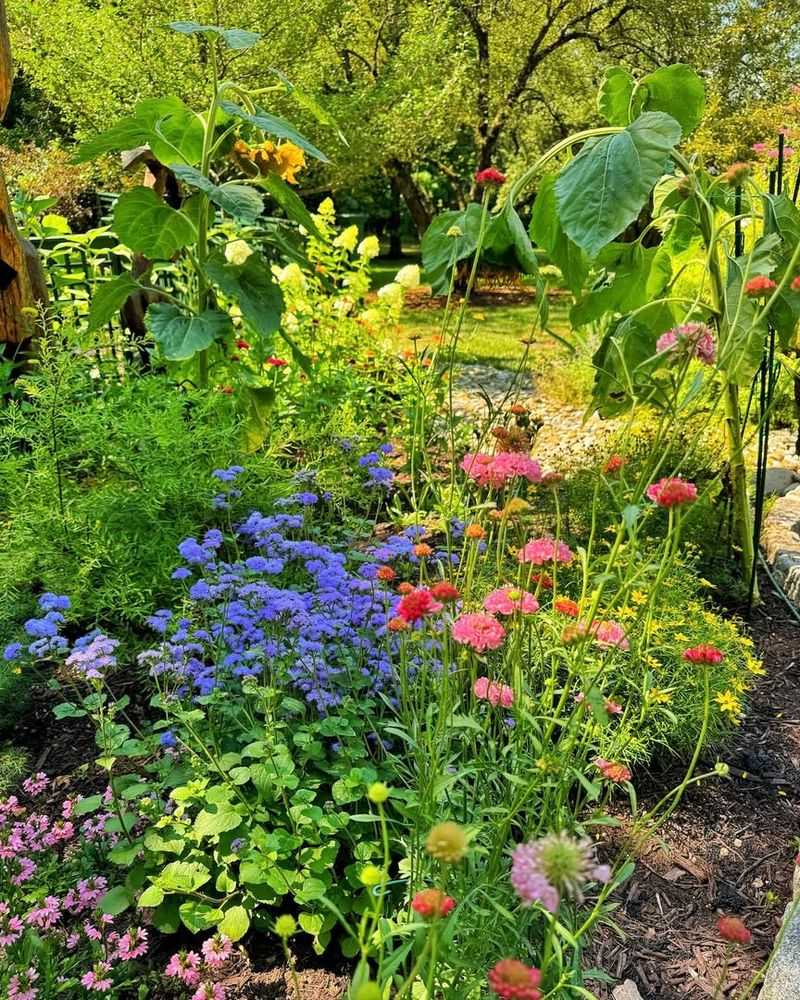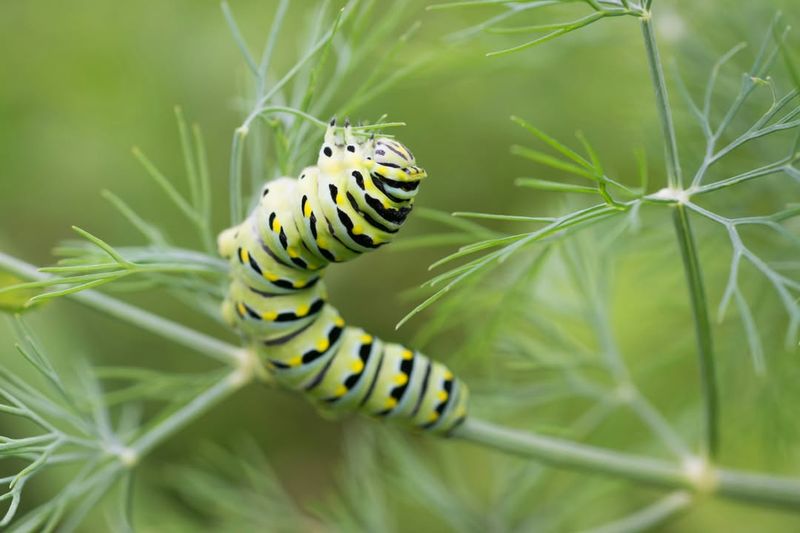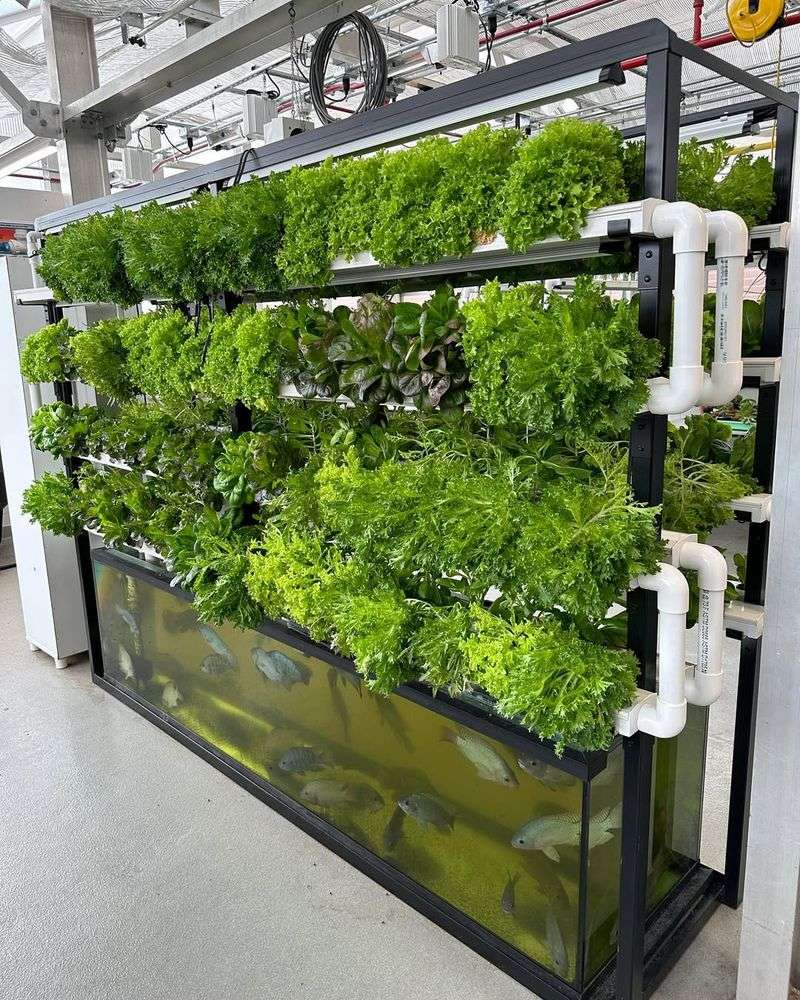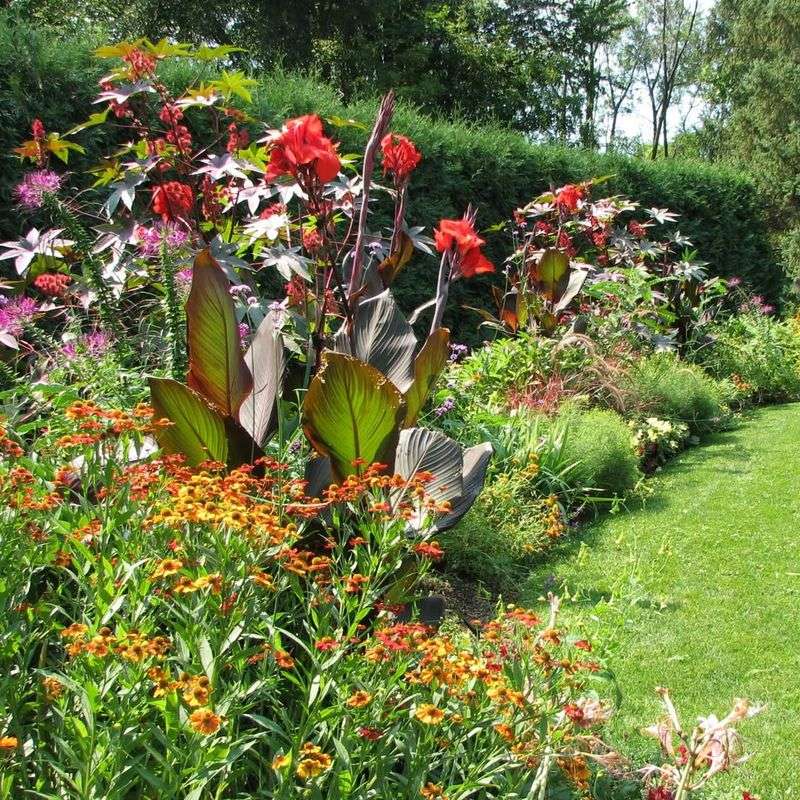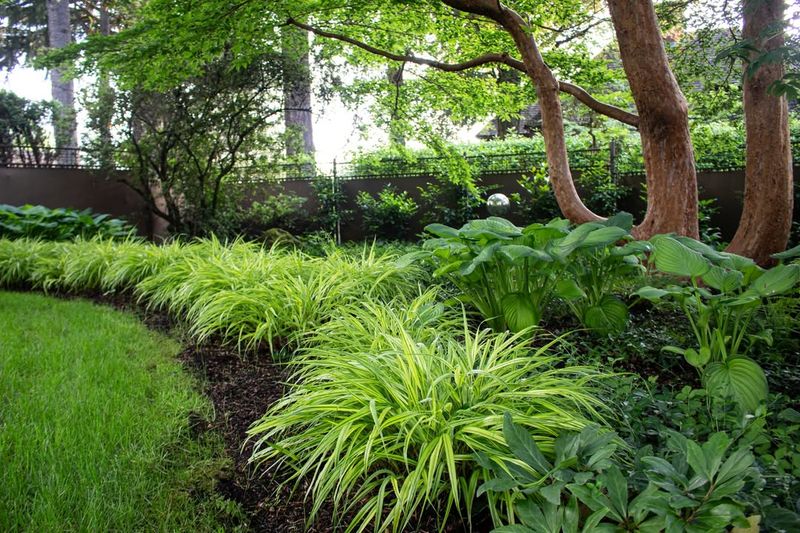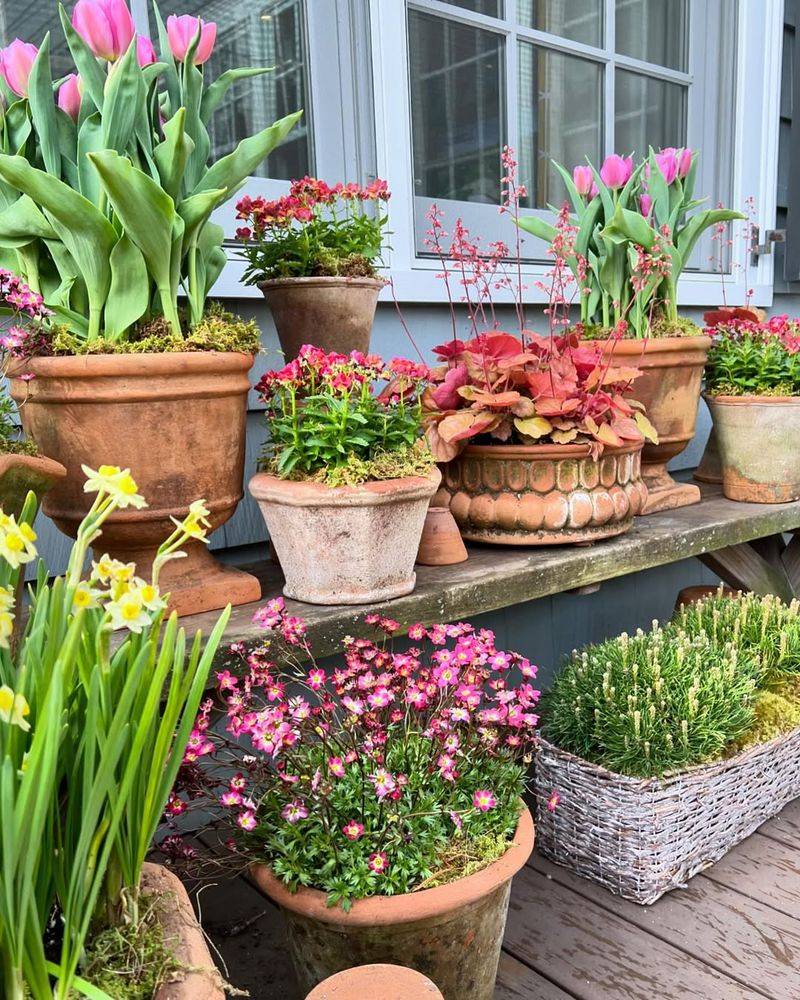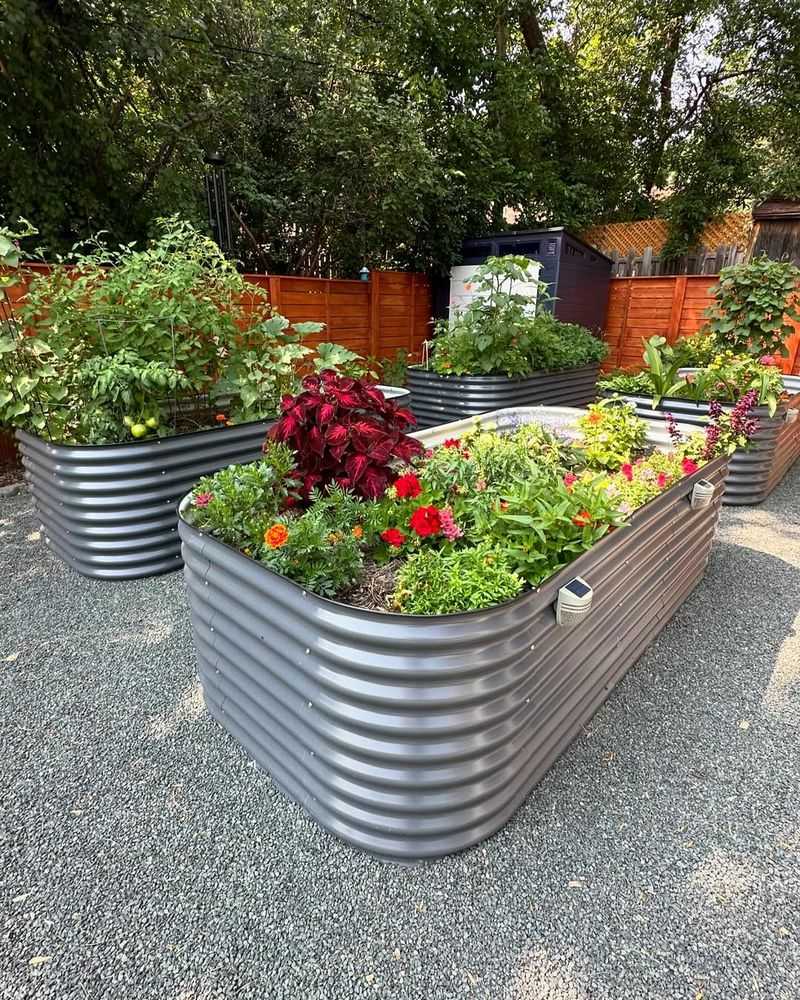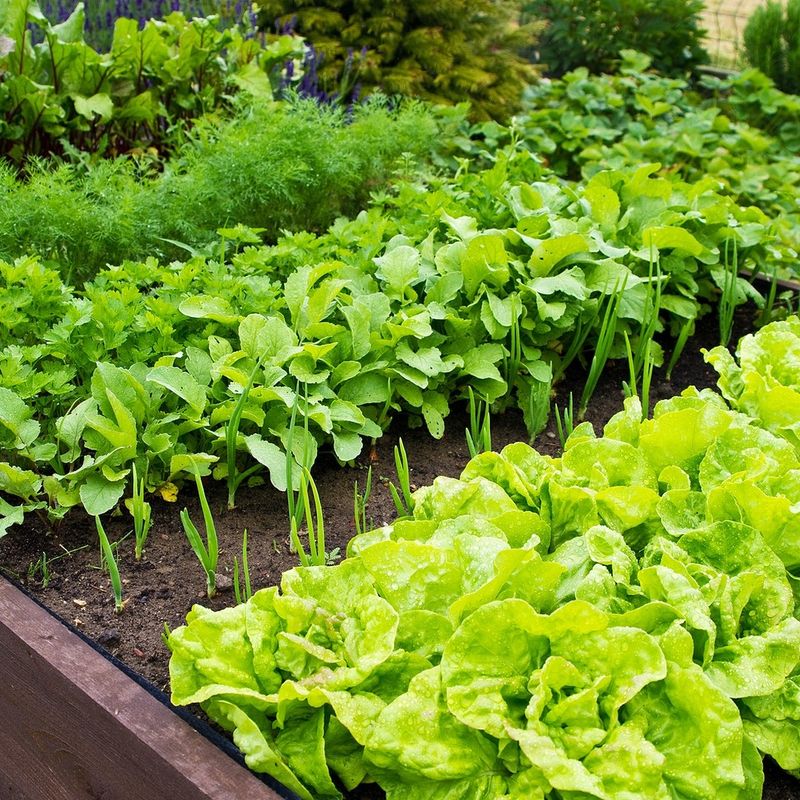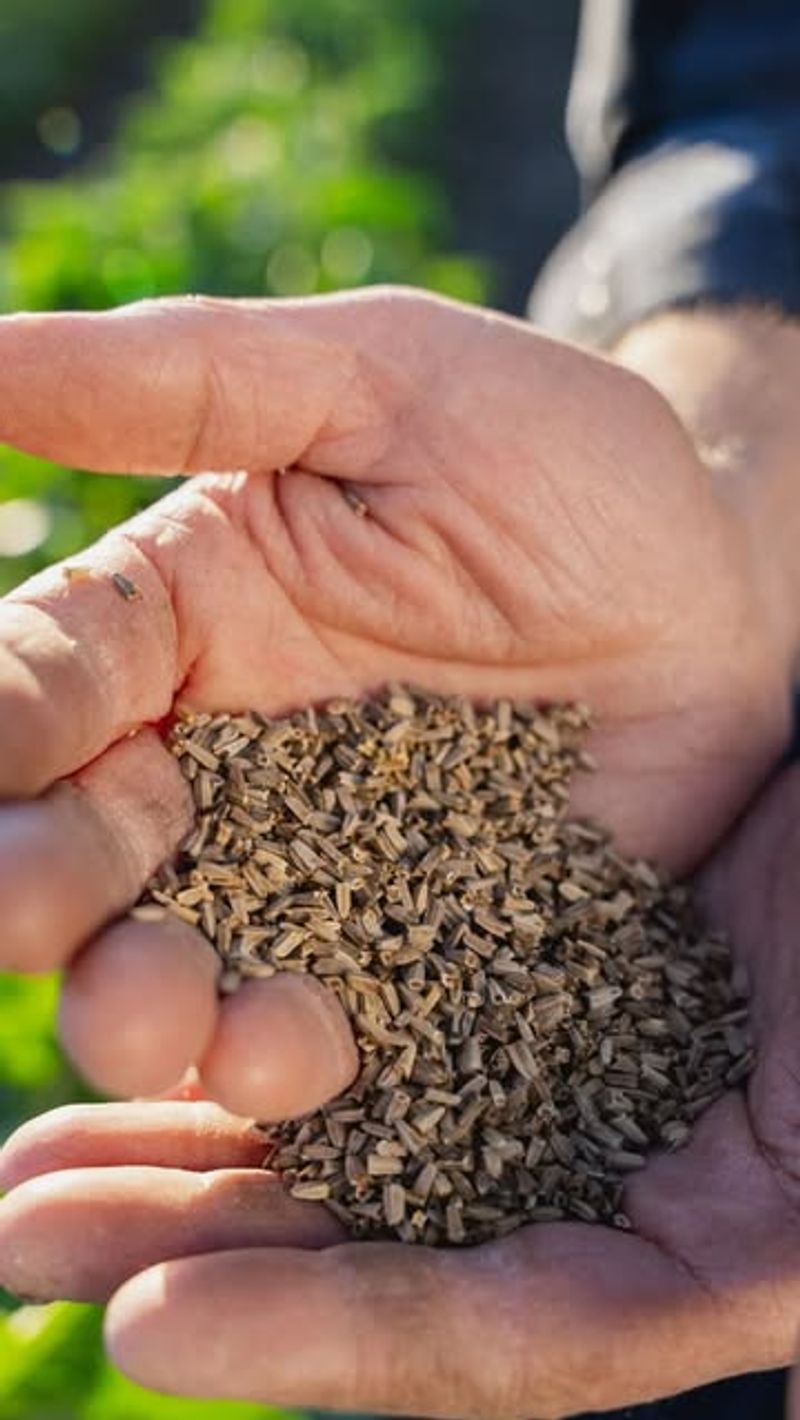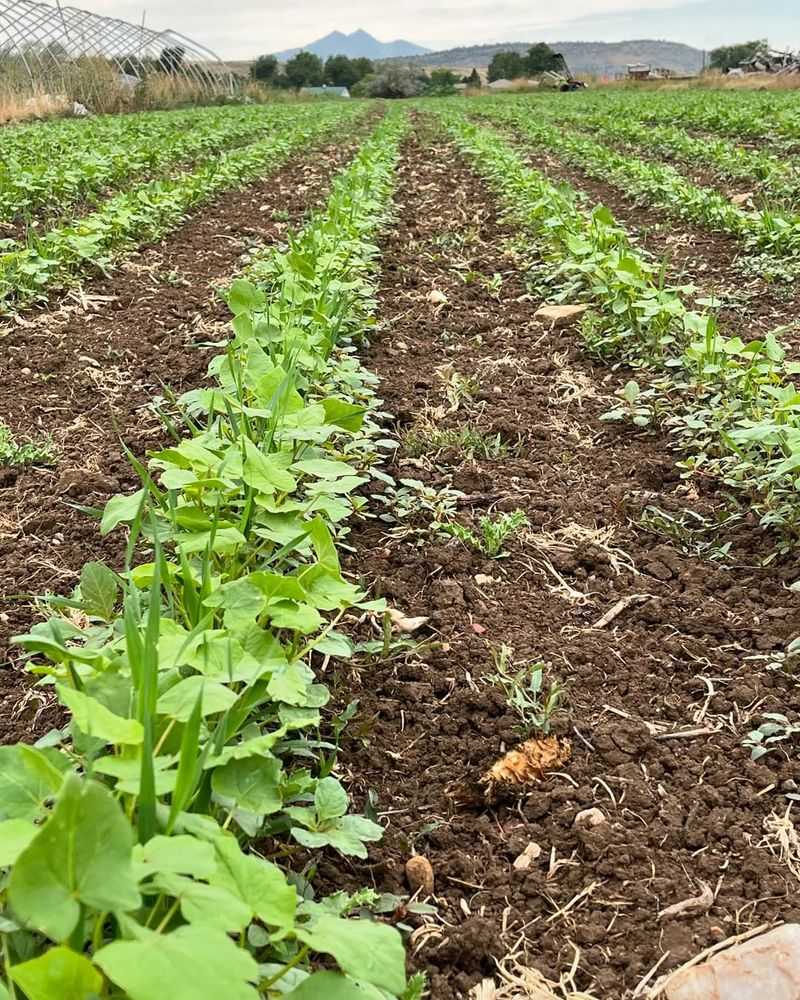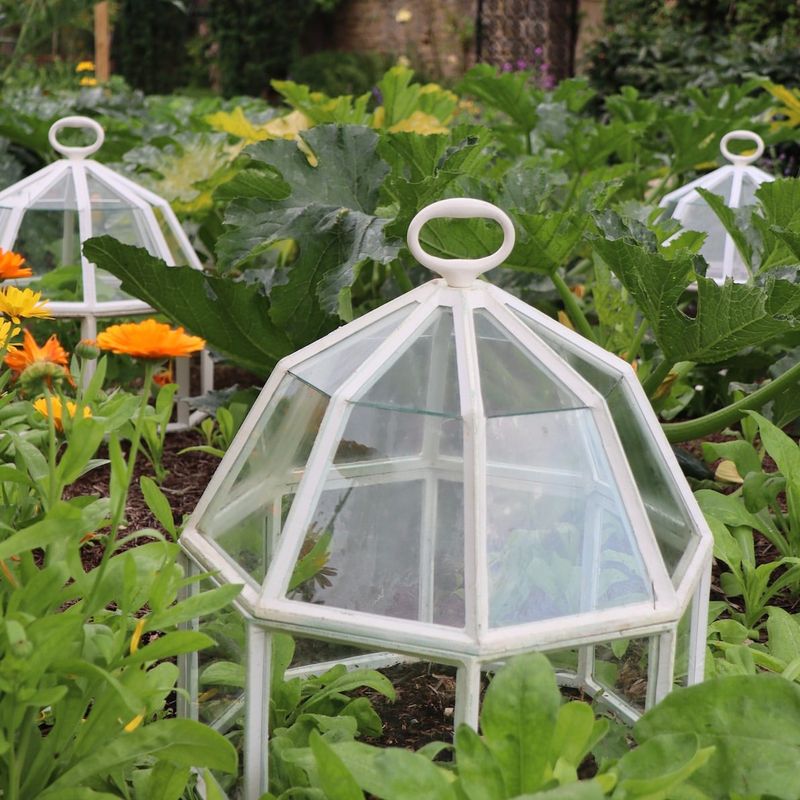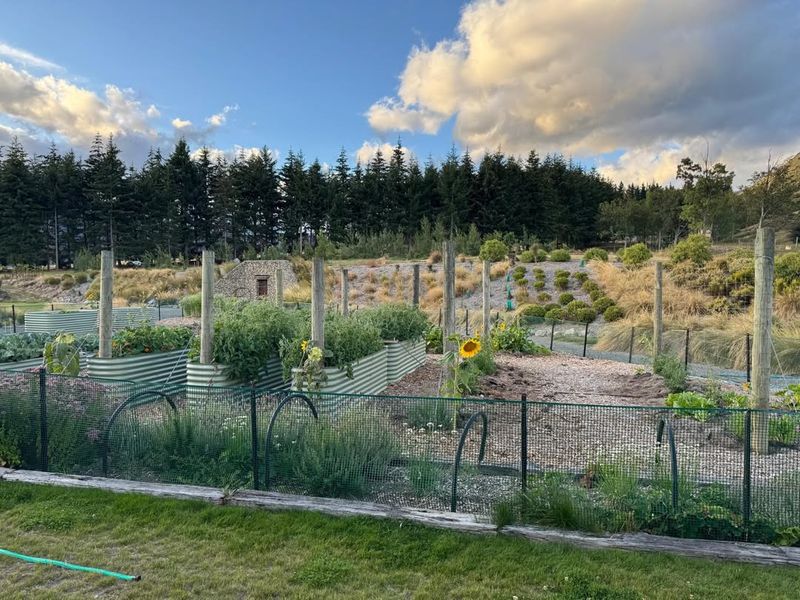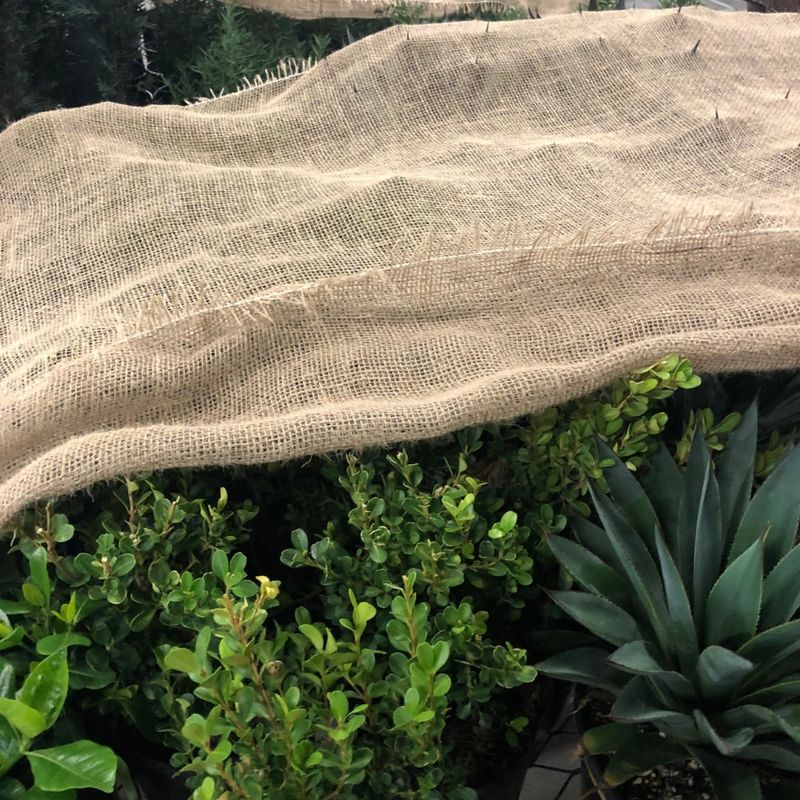Keeping your garden thriving all year might sound challenging, but with the right strategies, it’s totally doable.
Whether you’re a pro or just getting started, these 27 simple ways will help you make the most of every season. From smart planting techniques to clever tricks for extending your harvest, you’ll learn how to keep your garden productive no matter the weather.
1. Raised Beds
It all starts with a structure that lifts your plants above the ground. Raised beds provide excellent drainage and soil control. They warm up earlier in the spring, allowing you to plant sooner. Additionally, they can be placed almost anywhere, even on concrete.
Raised beds can be made from various materials like wood, stone, or even metal. These structures enable better management of soil quality, ensuring your plants get the nutrients they need year-round. A must-have for any serious gardener.
2. Cold Frames
A simple way to extend your growing season is by using cold frames. These structures trap solar energy and use it to keep plants warm. Cold frames are perfect for protecting seedlings from harsh weather. They can be built from wood and glass or recycled materials.
This method allows you to start seeds early or keep mature plants productive longer. With a cold frame, you can harvest fresh greens even in winter. Positioning them correctly optimizes sunlight exposure, maximizing their effectiveness.
3. Mulching
Covering soil with mulch serves multiple purposes. It conserves moisture, suppresses weeds, and adds organic matter to the soil as it breaks down. Mulching helps keep the soil temperature consistent, protecting plant roots from extreme temperatures.
It can be made from organic materials like straw, leaves, or wood chips. By choosing the right mulch and applying it properly, you can significantly enhance your garden’s health and productivity throughout the year. This simple step is crucial for sustainable gardening.
4. Companion Planting
Consider the benefits of strategic plant pairing. Companion planting involves growing different plants together that can benefit each other. For example, basil and tomatoes are a great pair. Basil enhances tomato flavor and repels pests. Marigolds deter nematodes and attract beneficial insects.
This practice increases biodiversity in your garden, which improves resilience against pests and diseases. Over time, companion planting can lead to healthier plants and higher yields. It’s an essential tactic for a thriving, year-round garden.
5. Greenhouses
Imagine a controlled environment that protects your plants from the elements. Greenhouses allow you to maintain optimal growing conditions regardless of the weather outside. They shield plants from frost, wind, and pests. Greenhouses can range from simple, small structures to elaborate setups.
By using a greenhouse, you can extend the growing season and grow crops that wouldn’t normally survive in your climate. This investment can greatly enhance your ability to cultivate a year-round garden.
6. Seasonal Crop Rotation
Rotating crops according to the season is vital for maintaining soil health. Different plants have varying nutrient requirements and pest resistances. By changing planting locations each season, you prevent soil depletion and reduce the buildup of pests and diseases.
This practice also encourages a more balanced ecosystem within your garden. Planning your crop rotation carefully can lead to more robust plants and increased yields. It’s a fundamental principle for anyone looking to garden year-round effectively.
7. Row Covers
Think of a simple solution to shield your plants from harsh conditions. Row covers are versatile tools that offer protection from frost, pests, and wind. They are made from lightweight fabric and can be draped directly over plants.
Row covers allow sunlight and rain to reach plants while providing a barrier against the elements. This tool is particularly useful during transitional seasons when the weather is unpredictable. Implementing row covers can significantly boost your garden’s resilience.
8. Rainwater Harvesting
Harnessing the power of rainwater is both sustainable and economical. Setting up a rainwater harvesting system involves collecting rainwater from rooftops into barrels. This water can be used to irrigate your garden during dry periods, reducing dependence on municipal water supply.
Rainwater is free of chemicals often found in tap water, making it ideal for plants. With proper filtration and storage, rainwater harvesting can become an integral part of your year-round gardening strategy. It’s an eco-friendly way to ensure your plants are well-watered.
9. Vertical Gardening
Maximize your growing space by thinking upwards. Vertical gardening is perfect for small spaces or urban settings. By using wall planters, trellises, or towers, you can grow a wide variety of plants vertically. This approach not only saves space but also improves air circulation and exposure to sunlight.
Vertical gardens can be both functional and decorative. They are a practical solution for those with limited ground area but a desire to cultivate a diverse range of plants year-round.
10. Succession Planting
Imagine a continuous harvest throughout the year. Succession planting involves growing different crops in the same space at different times. As one crop is harvested, another is planted, ensuring a steady supply of produce. This method keeps your garden productive and reduces downtime between harvests.
Planning and timing are crucial for successful succession planting. By carefully selecting varieties and scheduling planting dates, you can enjoy a diverse range of fresh produce in every season.
11. Herb Spiral
Think about a compact and efficient way to grow herbs. An herb spiral is a vertical garden design that maximizes space and water usage. By creating a spiral structure, you can grow a variety of herbs with different moisture and sunlight needs in one location.
This setup takes advantage of varying microclimates, with the top being drier and sunnier, and the bottom more shaded and moist. An herb spiral can be a beautiful and practical addition to any garden, perfect for year-round cultivation.
12. Hydroponics
Imagine growing plants without soil. Hydroponics is a method where plants are grown in nutrient-rich water solutions. This system allows for precise control over nutrients, water, and light, leading to faster growth and higher yields. Hydroponics is ideal for indoor gardening and can be set up in small spaces.
By using this method, you can cultivate a wide range of plants regardless of the season. It’s a modern approach to gardening that offers flexibility and efficiency.
13. Polytunnels
Imagine a plastic-covered structure that extends your growing season. Polytunnels create a microclimate, protecting plants from harsh weather and pests. They are similar to greenhouses but more cost-effective and easier to set up.
Polytunnels retain heat and humidity, allowing year-round cultivation of various crops. They are particularly useful for growing sensitive plants that require stable conditions. Investing in a polytunnel can significantly boost your garden’s productivity and longevity.
14. Soil Testing
Start with understanding your garden’s foundation. Soil testing provides crucial information about pH levels and nutrient content. Knowing these details allows you to amend the soil properly, ensuring optimal growing conditions.
Regular soil testing helps you track changes over time, indicating which nutrients need replenishing. This practice leads to healthier plants and greater yields. By investing in a simple soil test kit, you empower yourself to make informed decisions for year-round success.
15. Perennial Vegetables
Consider plants that come back year after year. Perennial vegetables require less maintenance than annuals. Once established, they provide a continuous harvest without replanting each season. Common examples include asparagus, rhubarb, and artichokes.
These plants build resilience over time, adapting to local conditions and improving soil health. Perennials are an excellent choice for sustainable, low-maintenance gardening. By incorporating them into your garden, you ensure a reliable supply of fresh produce.
16. Composting
Transform waste into a valuable resource by composting. Composting involves breaking down organic matter into nutrient-rich soil. It reduces landfill waste and enriches your garden. By composting kitchen scraps and garden waste, you create a sustainable cycle of renewal.
The resulting compost can be used to improve soil structure and fertility. Regularly turning the compost pile speeds up the decomposition process. Composting is an environmentally friendly practice that supports healthy, productive gardening year-round.
17. Winter Sowing
Imagine starting your seeds in the cold. Winter sowing involves planting seeds in containers and leaving them outside during winter. This method mimics natural cold stratification, toughening seedlings against harsh conditions. As temperatures rise, the seeds germinate, resulting in robust plants.
Winter sowing is ideal for perennials and hardy annuals. It requires minimal effort and space, using recycled containers like milk jugs. By embracing this technique, you can enjoy early blooms and a jump start on the gardening season.
18. Water-Wise Gardening
Optimize water usage with efficient gardening practices. Water-wise gardening focuses on reducing water consumption without sacrificing plant health. Techniques include drip irrigation, mulching, and choosing drought-tolerant plants. By implementing these methods, you conserve water and maintain a thriving garden.
Drip irrigation delivers water directly to plant roots, minimizing evaporation. Mulching retains soil moisture and reduces runoff. Water-wise gardening is an essential approach for sustainable, year-round cultivation, especially in areas prone to drought.
19. Microclimates
Discover the unique climates within your garden. Microclimates are small areas with different conditions than the surrounding environment. By identifying and utilizing these zones, you can plant species suited to each area. For example, use sunny spots for heat-loving plants and shaded areas for cooler crops.
Creating windbreaks or using structures can further modify microclimates. Understanding and exploiting these variations increases plant success and extends the growing season, making your garden more adaptable and productive.
20. Natural Pest Control
Embrace the power of nature to manage pests. Natural pest control involves attracting beneficial insects and using eco-friendly methods to reduce harmful pests. Ladybugs, praying mantises, and birds are natural predators that help keep your garden balanced.
Planting insectary plants and providing habitats encourages these allies. Using organic sprays and traps also deters pests without harming the environment. This approach fosters a healthy ecosystem, minimizes chemical use, and supports sustainable, year-round gardening.
21. Frost Tolerance
Select plants that thrive despite the cold. Frost-tolerant vegetables such as kale, Brussels sprouts, and Swiss chard withstand freezing temperatures, ensuring a continuous harvest. These hardy plants often taste sweeter after frost exposure.
Incorporating frost-tolerant varieties extends your growing season into winter. By choosing the right plants and providing proper care, you can maintain a productive garden even in cold climates. This strategy reduces the need for artificial heating and enhances garden sustainability.
22. Aquaponics
Combine fish farming with hydroponics for a symbiotic system. Aquaponics involves raising fish and using their waste to nourish plants. The plants filter the water, creating a balanced ecosystem. This method is resource-efficient, requiring less water than traditional gardening.
Aquaponics is suitable for indoor or outdoor setups, providing fresh produce and fish year-round. By embracing this innovative technique, you support sustainable gardening practices and enjoy a diverse harvest. It’s an engaging way to connect with nature.
23. Biodiversity
Celebrate diversity in your garden. Biodiversity involves planting a wide range of species, fostering a resilient ecosystem. A diverse garden attracts pollinators, controls pests, and improves soil health. Incorporating flowers, shrubs, and trees alongside vegetables enhances aesthetic appeal and functionality.
Biodiversity contributes to a balanced environment, supporting plant health and productivity. By prioritizing diversity, you create a dynamic, year-round garden that adapts to challenges and thrives in various conditions.
24. Shade Gardening
Explore the potential of shaded areas. Shade gardening involves selecting plants that thrive with limited sunlight. Shade-loving varieties like hostas, ferns, and astilbes add texture and color to your garden. These plants require less water and are ideal for areas beneath trees or buildings.
Shade gardening expands your planting options and maximizes garden space. By choosing the right plants, you can create a lush, inviting environment that complements sunnier garden sections, ensuring year-round enjoyment.
25. Container Gardening
Think beyond traditional garden beds. Container gardening offers flexibility and convenience, allowing you to grow plants in pots or containers. This method is perfect for small spaces or urban settings. You can move containers to optimize sunlight exposure and protect plants from extreme weather.
Container gardening is versatile, accommodating herbs, flowers, and vegetables. By using high-quality potting soil and regular fertilization, you can maintain healthy, productive plants year-round. It’s an accessible way to enjoy gardening regardless of space constraints.
26. Edible Landscaping
Reimagine your landscape to include edible plants. Edible landscaping combines aesthetics with functionality, using plants that provide food as well as beauty. Incorporate fruit trees, berry bushes, and vegetable patches into your design.
This approach maximizes space and offers a sustainable food source. Edible landscaping enhances biodiversity and reduces the need for traditional lawns. By thoughtfully planning your garden, you create an inviting, productive environment that supports year-round cultivation. It’s a delicious way to enjoy nature’s bounty.
27. Intercropping
Enhance your garden’s productivity with strategic planting. Intercropping involves growing two or more crops together for mutual benefit. For example, corn and beans make an excellent pair, as beans fix nitrogen in the soil, benefitting corn growth.
This method optimizes space and resources, increasing yields. Intercropping improves soil fertility and pest control, fostering a balanced ecosystem. By selecting compatible plant combinations, you enhance biodiversity and garden resilience. It’s a practical tactic for year-round gardening success.
28. Seed Saving
Preserve your favorite plants by saving seeds. Seed saving involves collecting and storing seeds from your best plants for future planting. This practice ensures genetic diversity and adapts plants to local conditions over time.
By saving seeds, you maintain control over plant varieties and reduce reliance on commercial seed suppliers. Properly stored seeds can last for years, providing a sustainable source of new plants. Seed saving is an empowering, cost-effective strategy for long-term gardening success.
29. Cover Crops
Enrich your soil naturally with cover crops. Also known as green manure, cover crops are planted during the off-season to improve soil fertility. They prevent erosion, suppress weeds, and enhance soil structure. Common cover crops include clover, rye, and vetch.
When tilled into the soil, they add organic matter and nutrients. Cover crops promote a healthy, productive garden environment, making them an essential part of sustainable, year-round gardening practices.
30. Cloches
Provide your plants with individual protection. Cloches are bell-shaped covers placed over plants to shield them from frost and pests. Made from glass or plastic, they create a mini-greenhouse effect, retaining heat and moisture.
Cloches are ideal for early spring and late fall, extending the growing season. By using cloches, you protect young seedlings and delicate plants, ensuring their survival during unpredictable weather. This simple tool is a valuable addition to any year-round gardening toolkit.
31. Root Cellars
Preserve your harvest with an ancient technique. Root cellars offer a cool, dark environment for storing crops like potatoes, carrots, and onions. This method reduces waste and extends the usability of your produce.
By keeping temperatures and humidity levels stable, root cellars maintain the freshness and quality of stored food. Building a root cellar can be a simple DIY project or a more elaborate structure. It’s a practical way to enjoy your garden’s bounty throughout the year, minimizing spoilage and maximizing storage.
32. Windbreaks
Shield your garden from damaging winds. Windbreaks involve planting trees or shrubs to block and divert wind flow. This protection reduces soil erosion, water loss, and physical damage to plants. Windbreaks create a more stable microclimate, enhancing plant health and productivity.
They also offer habitat for wildlife and increase biodiversity. By strategically placing windbreaks around your garden, you create a more resilient environment. This practice is essential for maintaining a productive, year-round garden, especially in windy regions.

